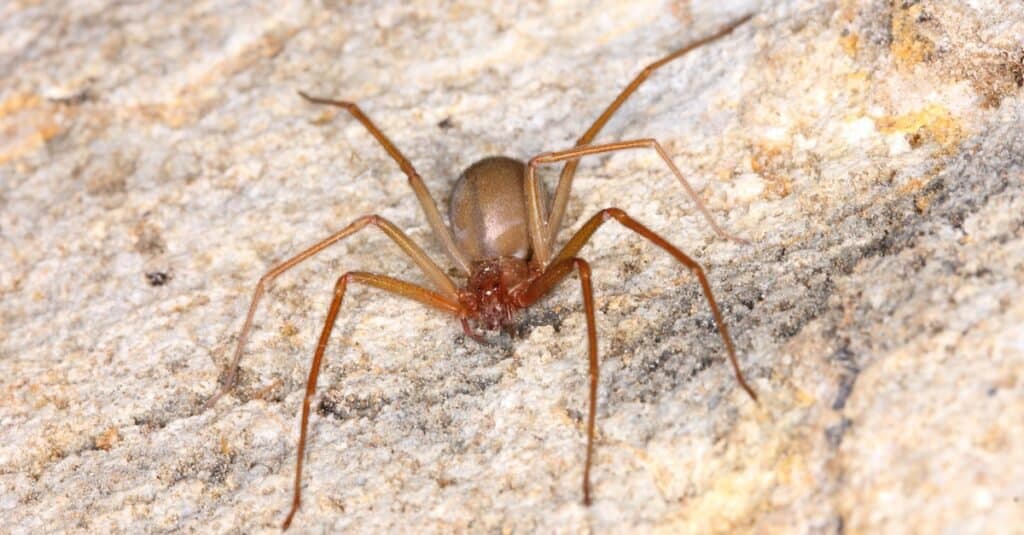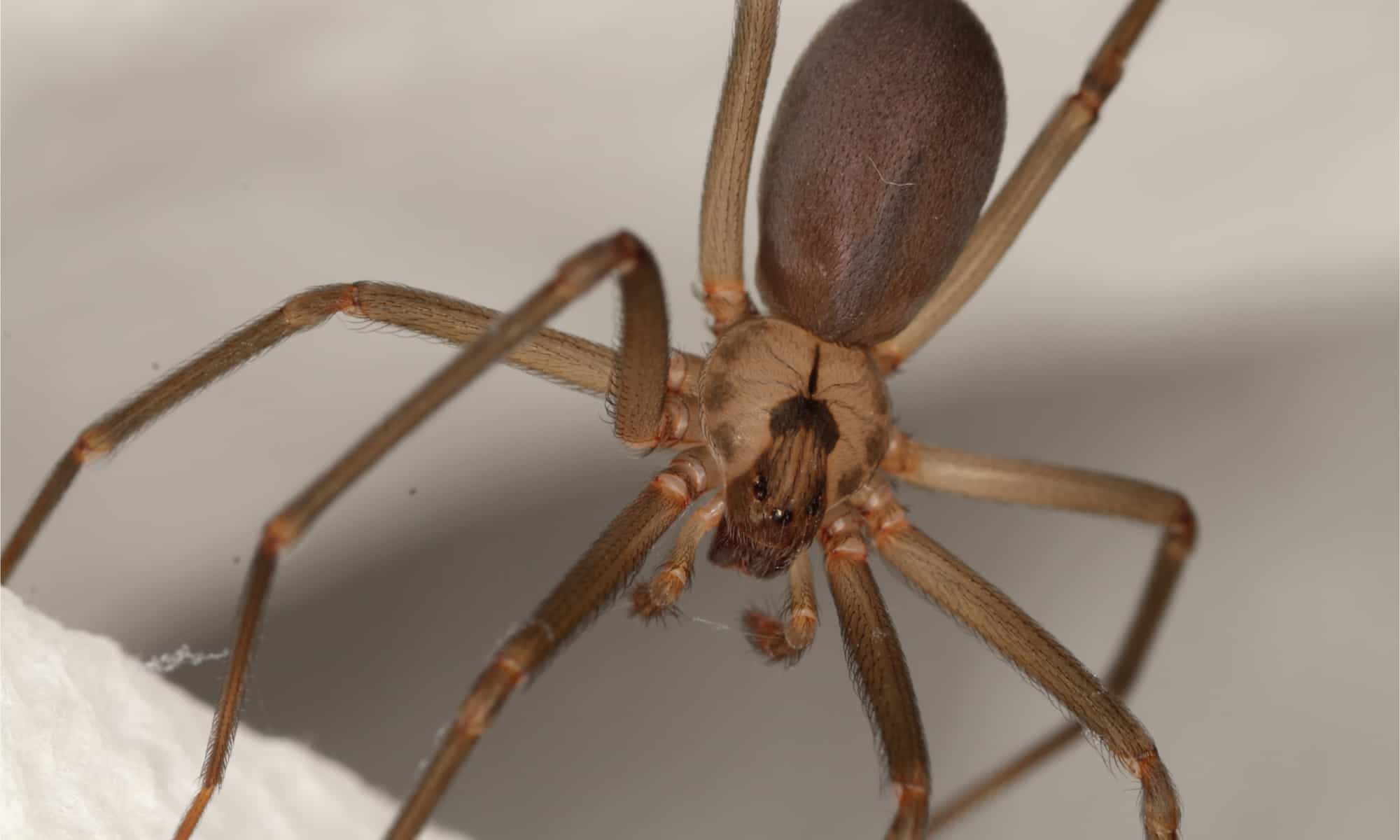Brown recluse spiders are some of the most famous (or, should we say ‘infamous’) spiders in the United States. However, despite a pervasive fear of them, there are certain, lesser-known aspects of the brown recluse that most people aren’t aware of.
For instance, most people don’t realize how small they are, with a fully grown female only reaching about half an inch. Their poison is also unique and particularly ghastly if it goes untreated. They are also far more comfortable and elusive in our homes than expected.
However, for all of the bad attributes people associate with the brown recluse, also known as the ‘violin’ spider or the ‘fiddleback,’ most will misidentify them. After all, they are small and have a rather generic brown color. In short, there is a lot to learn about brown recluse spiders in Oklahoma and we’re here to fill in the gaps!
Where Do Brown Recluse Spiders Live?
In terms of geography, brown recluse spiders are primarily south to midwest spiders and Oklahoma is one of the states where this particular arachnid is well-known and prevalent. They aren’t often seen as far south and east as Florida (though they are found there) but they’re fairly common in Alabama, Mississippi, Louisiana, Missouri, Arkansas, Texas, Oklahoma, Georgia, Tennessee, Kentucky, and Idaho.
They are also in the states bordering any of the above-listed states, but only close to the border with that state. Just because they are prevalent in the border region of a state, doesn’t mean they spread out through the entire state.
As far as where they live locally, brown recluse spiders are like many other spiders or creepy crawly insects marked down on your “stay away from it” list. They are primarily nocturnal and are a very evasive species. Unlike horror movies, brown recluse spiders don’t actively seek people out or hide in obvious areas where they face exposure.
Outside, their favorite spots are beneath rocks or broken tree branches, underneath piles of leaves or anywhere they can find shelter above their heads and darkness. Inside the home, they do much the same, seeking out dark corners such as the bottom of desk drawers and boxes, behind furniture, or inside cabinets—in the back.
Boxes are one of their primary sources of transportation, whether you are moving stuff around within the home, packing for a vacation, or moving to another place.
Fiddelback Behavior Characteristics

Even though it has extremely dangerous venom, the brown recluse has incredibly small fangs compared to most spiders.
©Physics_joe/Shutterstock.com
Brown recluse spiders are typical of most spiders. They build webs in the dark recesses of their environment. The web serves as an alarm bell for anything that attempts to pass through. A brown recluse strikes quickly, and will immediately investigate any disturbance to its web structure.
The female is generally larger than the male and far more reclusive. The male is spotted far more often because they have to move around to find a mate. The female simply builds her web and waits. This gives rise to the impression that most or all brown recluse spiders are much smaller than they are since the male is the one that’s seen the most often.
For spiders, both the male and female live fairly long lives, between 2 and 4 years, with some surviving for up to 7 years. Thanks to their long lives and the female’s reproductive capabilities, brown recluse spiders can breed and drastically expand their numbers in a very short timeframe.
Once a female mates with a male, she never has to mate again, as all of her succeeding eggs, every remaining year in her life, are now fertile. Because she can lay up to 150 fertile eggs per year, a single female in your home is capable of producing, at a minimum, 300 new fiddlebacks in two years.
The problem is, though there may be hundreds of young, new fiddlebacks in your home, they’re difficult to get rid of because of how elusive they are. By the time you spot a few of them and the dawning comprehension hits home, they’re already infesting your home.
Brown Recluse Spiders: Poison

A close-up look at a brown recluse bite.
©Robert D Brozek/Shutterstock.com
The brown recluse and the black widow go back and forth on which one has the more deadly bite. either way, it’s extremely rare for a death to result from either of these spiders. A bite from a black widow is more dangerous for children and the elderly because of its potential effects on the nervous system.
The brown recluse’s venom is equally dangerous because it is a necrotic poison, and the true danger of the bite shows up days afterward. On the bright side, most people will not experience the more debilitating effect of a brown recluse spider.
For those that do, the flesh immediately surrounding the bite begins to rot, sloughing away from the underlying tissue. The victim will experience a lot of pain directly in the area, along with swelling and an accumulation of pus.
If treated too late, the area around the bit will most likely develop into a cratered scar. As with black widows, the children and the elderly are more susceptible to the worst, potential conditions of a bite from a brown recluse.
Fortunately, fiddlebacks won’t bite for no reason and typically only do so when they feel physical pressure. For instance, putting on your shoe, sliding a shirt on, or reaching into a box while accidentally pressing the spider up against something.
How to Deal with a Brown Recluse Infestation

The brown recluse spider is one of the most dangerous spiders in the United States. Its venom destroys the walls of blood vessels near the site of the bite, sometimes causing a large skin ulcer.
©Pong Wira/Shutterstock.com
The simplest way is to contact your local pest control. They usually have a solid methodology, along with the toolkit necessary to get rid of a brown recluse infestation. If you want to go it alone, however, there are a couple of ways you can tackle the problem.
Diatomaceous Earth
This method is becoming more and more popular as the benefits of diatomaceous earth continue to proliferate. The particles that make up the diatomaceous earth particles are razor sharp. If you have a microscope and decide to take a look, it will look like a crystal forest of razor-sharp walls everywhere.
When a brown recluse gets this stuff on its body, it slices apart its legs. This, of course, drains them of their necessary fluids (blood, if you will), dehydrating and killing them. Spread diatomaceous earth anywhere you think brown recluse spiders are present or in places they like to frequent. Let the spiders do the rest.
Glue Traps
These are useful for humane trapping and getting rid of mice and rats. However, it’s also useful for several bugs and insects, including a brown recluse infestation. Unfortunately, they are not the end-all-be-all because the spider has to walk over them, something a brown recluse may not do.
You also have to be very particular about where you place them to get the most effect.
Essential Oils
This is more effective as a repelling mechanism than it is as a pesticide. Brown recluse spiders are like many arachnids and insects in that they hate the powerful aroma of certain plants and chemicals. Specifically, lavender and mint work wonders. If you are trying to keep them out, it’s best to place essential oils around points of ingress and egress throughout the home.
Pesticide Products
This method is as close as you can get to what a pest control company brings to the table. Locate pesticides in the store that are specifically formulated for brown recluse spiders or spiders in general. Be careful about how you apply it, especially if you have pets or small children in the home.
Remember, brown recluse spiders prefer to hide in dark corners behind furniture, the back of cabinets, inside dresser drawers, pantries, closets, and boxes. These are the areas where you need to apply your focus the most.
Final Thoughts on Brown Recluse Spiders in Oklahoma
The brown recluse is a well-known spider throughout the state of Oklahoma, especially in Tulsa and Oklahoma City. Like any other state in the country, getting rid of them is much the same. The only difference in dealing with a brown recluse is the focus on where they tend to situate themselves or congregate within the home.
If you are bitten by a brown recluse, don’t give it time and see what happens. You should see your doctor right away. You’ll probably be fine but the slow and dangerous necrotic effect of the poison will leave lasting scars.
Thank you for reading! Have some feedback for us? Contact the AZ Animals editorial team.








